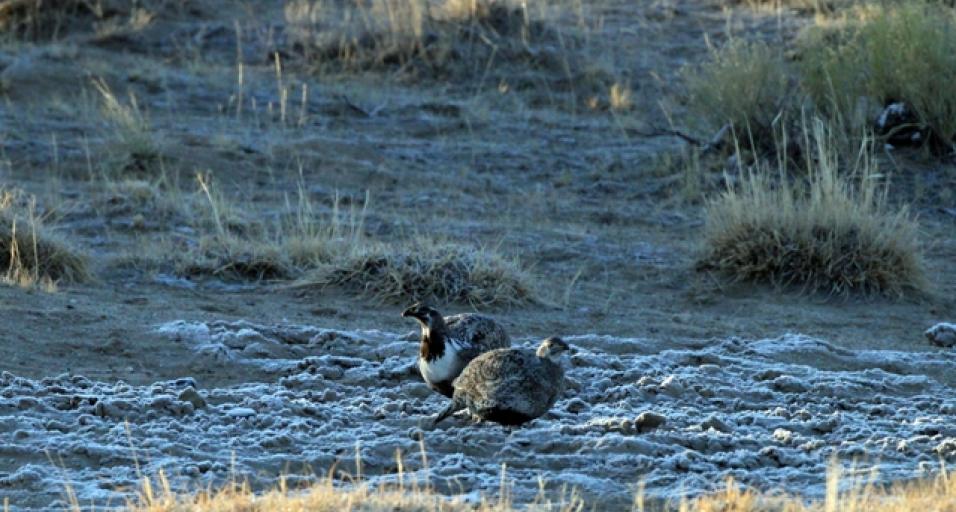During sage-grouse lek surveys, this young male (10-month old) and a hen were observed near Casper.
Note the white breast feathers without the well-developed air sacs on the male.
When we conduct sage-grouse lek observations, we must differentiate between males and females for population estimates. This is because males attend leks regularly while females only attend leks for a short period of time until they are successfully bred.
Population trend counts are based solely on male attendance, so it is critical that observers can recognize and differentiate the sex of these birds.This particular site was not on an actual lek, but is thought to be a geophagy site and is adjacent to anestablished lek. That means the sage-grouse visiting this site were observed eating dirt. Geophagy is a fairly recent observation in sage-grouse that scientists are still working to understand. Sage-grouse are thought to eat dirt in these areas to obtain trace minerals that may be vital for proper food digestion or nutrition prior to egg laying.
How to tell sage-grouse apart

